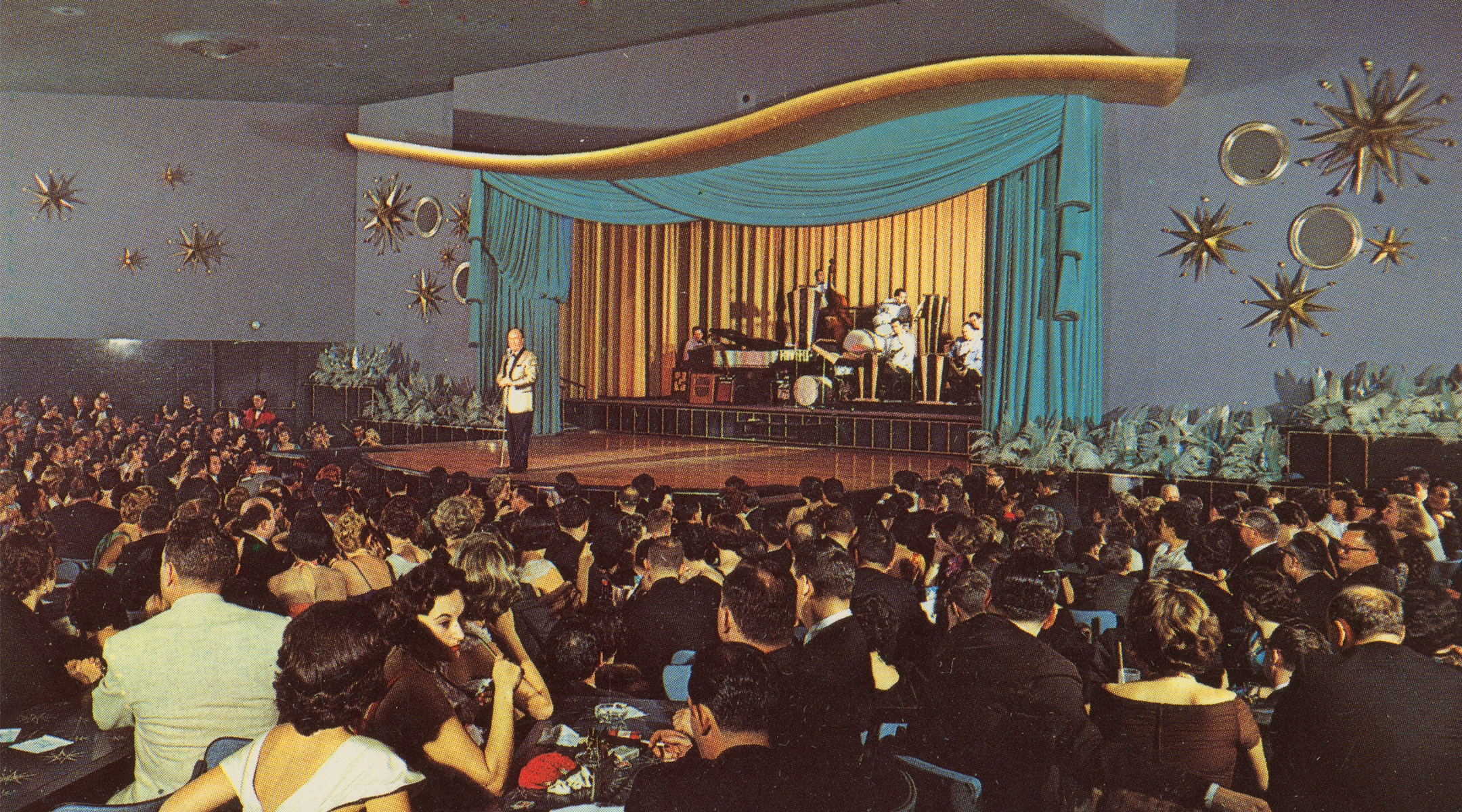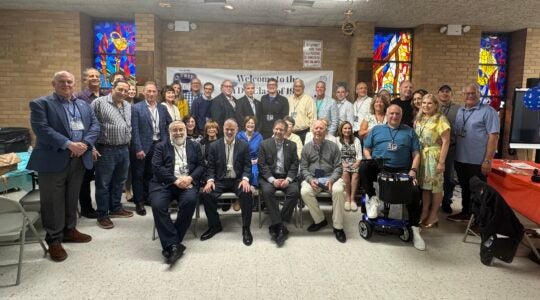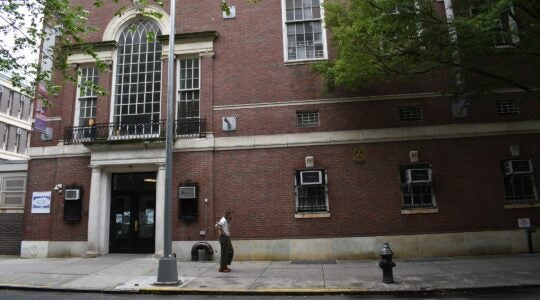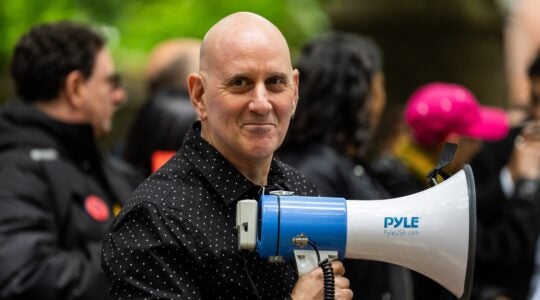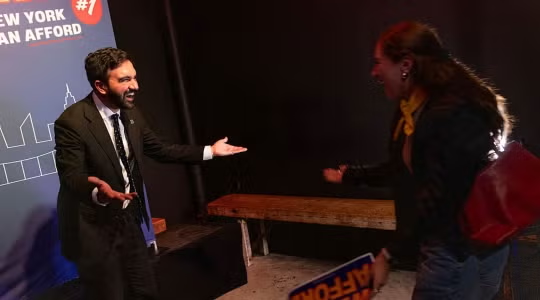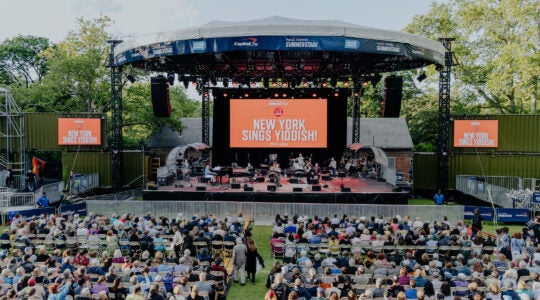(New York Jewish Week) – When Jewish comedian Michael Hirsch took the stage in the Catskills last month, he quickly realized that the crowd was much older than his typical audience — people who may have gone to shows back when the area was a hotbed of Jewish comedy.
“It was really people who were there for the original run of that, when it was in its heyday,” Hirsch told the New York Jewish Week about the audience at Shadowland Stages in Ellenville, New York. “And me, coming in as a 26-year-old, like, ‘How can I relate to these people?’ was really interesting.”
Comedy used to be a mainstay in the Catskills, a mountainous region once filled with resorts and vacation bungalows across New York’s Sullivan, Ulster and Orange counties. Nicknamed “The Borscht Belt,” the area attracted throngs of Jewish visitors in the mid-20th century. Along with copious amounts of food and family-friendly activities, entertainment — especially comedy — was a central part of the experience: Comedians including Jerry Lewis, Mel Brooks, Joan Rivers, Jackie Mason, Woody Allen and Jerry Seinfeld performed there early in their careers.
The good times didn’t last — as times and tastes changed, the resorts closed. Today, many of the remaining structures are in disrepair and several have recently caught fire. As the area’s economy faltered, its comedy circuit disappeared.
Perhaps improbably, however, that’s starting to change: Hirsch’s performance last month was the first in a new series of comedy shows organized by the Borscht Belt Museum that aims to bring comedy back to the Catskills.
The movement to re-invigorate Catskills comedy started in earnest last summer with the museum’s inaugural Borscht Belt Festival, which included well-received comedy shows and inspired the museum to host standalone comedy events this year in partnership with the New York Comedy Club, a Manhattan venue with locations in Midtown and the East Village. The first two Borscht Belt Comedy Club shows, as they were called, were scheduled back-to-back on March 16 at Shadowland Stages, and both sold out.
During his set, Hirsch tailored his material to his audience. He dropped terms like “swag” and “Roblox” but decided to leave in the dirty jokes, including a quip about impotence among older people. The crowd went for it, said Hirsch. He got into a back-and-forth with an audience member, likening the exchange to the crowd work that distinguished Borscht Belt comedy in its prime, when comics would engage with audiences during their performances in resort dining rooms.
“This is a room filled with people in their 60s and 70s and 80s and I’m talking about this,” he said. “Making a bunch of old Jewish people laugh from a joke like that was like, ‘Oh yes, that was satisfying.’”
The Borscht Belt Museum’s programming explores the legacy of the region’s comedy and its “impact on mainstream American culture,” said Andrew Jacobs, the president of the museum’s board. The museum opened a pop-up exhibit in Ellenville last summer, and a full opening is slated for next year.
“That’s one of the themes of the museum, is tracing that evolution and helping people understand that these comedians from the ’50s, ’60s and ’70s really laid the groundwork for the comedians that we know and love today,” he said. “They’re the inheritors of that tradition so we want people to see how that actually plays out.”
The comedy shows’ popularity demonstrated an interest in “contemporary living comedy,” Jacobs said. “We said, ‘This is something we should really pursue.”

A flyer for the March 16 Borscht Belt Comedy Club show. (Facebook)
The next Borscht Belt Comedy Shows in Ellenville are scheduled for April 27 and May 11, and the second Borscht Belt Festival will feature a comedy show presented by the New York Comedy Club on July 29. Meanwhile, the standup pipeline is also working in reverse: The Borscht Belt Comedy Club will make its New York City debut on June 2nd and 3rd at Theater 555 in midtown.
Both comedians and organizers said this new spate of shows — which mirrors a broader re-emergence of stand up in the region — are an opportunity to celebrate an iconic era in American comedy. Emilio Savone, a co-owner of the New York Comedy Club, said it was a “real thrill” to collaborate with the Borscht Belt Museum on the stand-up shows.
“For us it was a no-brainer,” he said.
Most of the comedians booked for the shows are Jewish, like Hirsch, or have connections to the region. “We want to be mindful this is a proud, rich history of a Jewish community and we definitely want to provide solid comics that will connect with them and we think strong Jewish comedians will be able to do that,” Savone said, adding that the shows will bring in other viewpoints as well.
“At the end of the day,” he said, “funny is funny and people want funny.”
One of the comedians in the March show, Eitan Levine, said he often performs at Jewish institutions including Hillels, Chabad houses and synagogues, making his routines a good fit for the Borscht Belt. His sets include jokes about his Holocaust survivor grandmother, his dating life as an Ashkenazi Jew, and how Jewish law firms don’t use jingles in their advertisements.
“Every single Jewish law firm’s radio ad is just some dude yelling, ‘My name is Josh Lowenfeld and you’re entitled to compensation!’ They all sound like Bernie Sanders at every debate,” he said. “That feels kind of Jewy, kind of Borscht Belt-y.”
Of course, comedy has undergone a sea change since the 1950s. Savone said that Borscht Belt comedians typically took a traditional approach, with performers doing “typical set up, punch lines.” Today, however, many “podcast comics,” as he calls them, use a more personal and longform approach.
“The Borscht Belt style of going out there like Rodney Dangerfield and doing one-liners that don’t really feel super connected to the comic, I think that is definitely done,” Levine said. “I think that audiences want to see material that doesn’t just feel like someone is reading off a script that they took out of ‘How to be Funny 101,’ the textbook. They want material that is connected to the person.”
“There is a way to merge those two things,” he added. “There is still room for a new generation of comics, Jewish comics who identify and storytell in a specific way.”
Hirsch cited Jewish comedian Andy Kaufman, who performed in the Borscht Belt, as an inspiration, but agreed that comedy has since evolved into different styles “like a river delta with a bunch of tributaries.” He described his style of comedy as “kind of like if Spongebob came to life. Weird, goofy, fun, high energy.” The Catskills shows could provide a new outlet for younger comics from the city to get on the road and try their material in front of new audiences, he said.
Hirsch, who grew up in a Jewish household in suburban Detroit, said Jewish audiences tend to be more involved than others — and for comics, crowd work harkening back to to the Borscht Belt era was a “necessary skill.”
“It just keeps the crowd engaged and it makes it more personal for them,” he said.
The forthcoming Borscht Belt Comedy shows are curated by comics Alejandro Morales, Anddy Egan-Thorpe and David Lonstein, who all grew up in the region and will perform at the April show alongside Christian Finnegan, a well-known comic who has appeared on Comedy Central, VH1 and “Chappelle’s Show.”
Morales was born to immigrant parents from Chile who met while working in the dining room at the Nevele Grand, one of the more prominent resorts that has since been abandoned. He grew up in Ellenville and worked at the hotel in the 1990s and early 2000s as a busboy, bellhop and at the front desk.
At the time, “the live entertainment of the heyday of the region was done,” he said. Live comedy was “only on television,” and the nearest club was a venue called Bananas in Poughkeepsie, over an hour away.
Despite missing out on the era’s peak, Morales rattled off a list of Jewish Borscht Belt performers that he looked up to: Mel Brooks, Joan Rivers, Lenny Bruce, Sid Caesar, Jackie Mason and Carl Reiner.
“Stand-up comedy really gestated in the Borscht Belt,” he said. “Stand-up comedy as it exists today only exists because of all the artistic fires that blazed in the middle of the 20th century, so I think we owe a great debt to that region.”
Though Morales now lives in Philadelphia, he sees the Borscht Belt series as a homecoming, as well as an opportunity to reinvigorate the local economy.
“I feel hugely privileged to be able to take part in restoring the Hudson Valley, the Catskills, the Borscht Belt to its previous glory,” he said. “It would be such a dream come true to sort of reinvigorate the region to what it was before I was even around.”
Morales said that, as a queer Catholic-raised atheist from a South American family, he identifies with the Borscht Belt as a refuge for outsiders. Jews began traveling to the area because many hotels at the time barred Jewish visitors, and other groups also found refuge in the region — a bungalow colony called Casa Susanna hosted LGBTQ people in the 1960s, and the Peg Leg Bates Country Club catered to Black Americans.
In that vein, while most of the comics in the upcoming shows are Jewish, Morales is also seeking to bring in more diverse viewpoints.
“One of the aspects of the Borscht Belt that really resonates with me is that it started as an outpost for outsiders,” he said. “Jewish folks were not allowed to vacation anywhere else so they created a home for themselves, to feel welcome, to have their own entertainment and I love that idea of featuring and supporting outsiders.”
The New York Jewish Week brings you the stories behind the headlines, keeping you connected to Jewish life in New York. Help sustain the reporting you trust by donating today.
